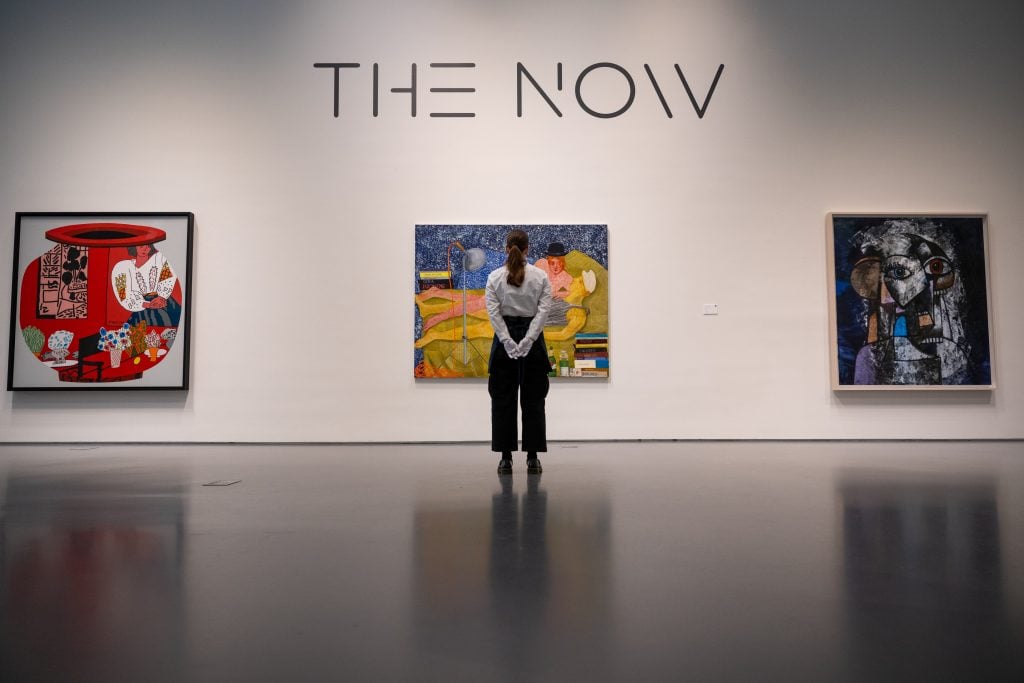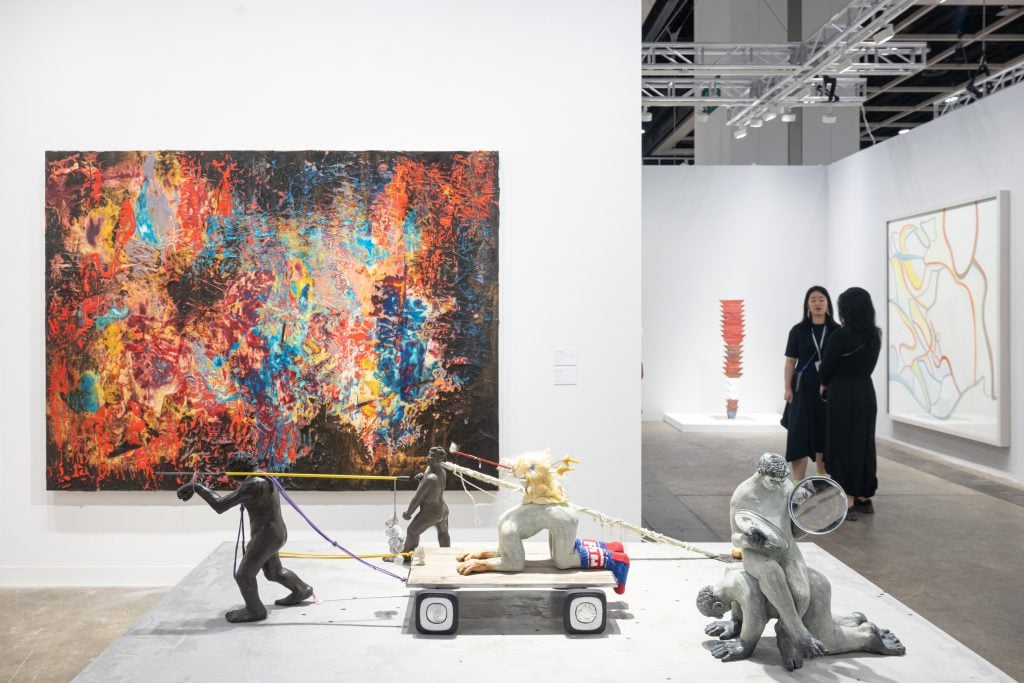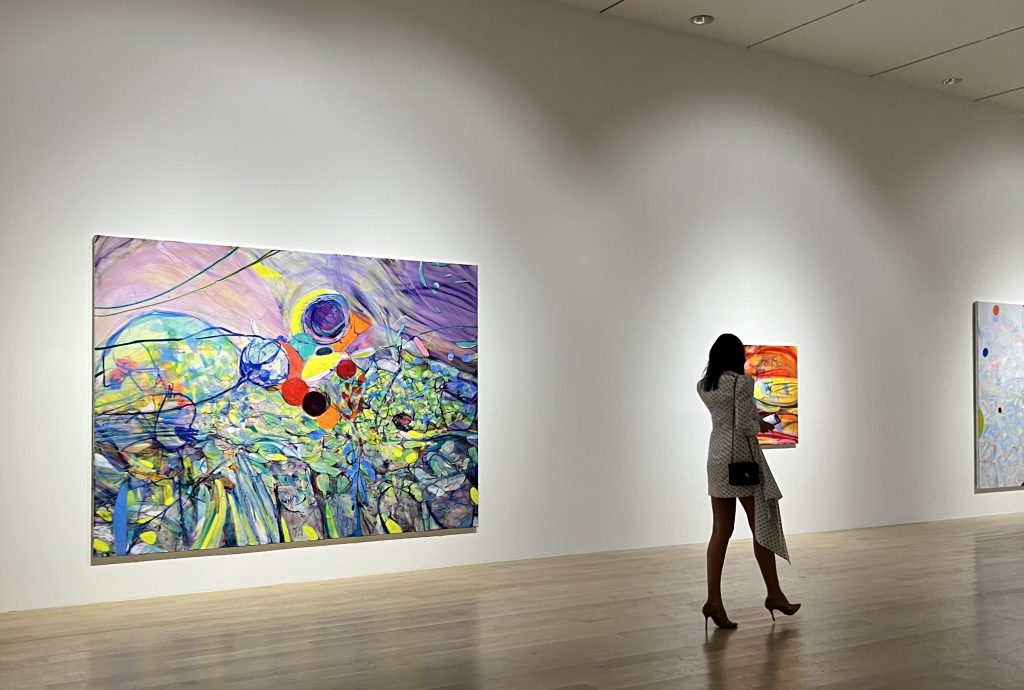The Art Detective
‘If It Goes to Zero—Fine’: Why Do Collectors Pay Wild Prices for New Art?
Wooed by galleries, buyers chase artworks like 'prestige fashion objects.' Do they know what they are doing?

Wooed by galleries, buyers chase artworks like 'prestige fashion objects.' Do they know what they are doing?

Katya Kazakina

Everyone knows that, from an investment standpoint, buying art is a gamble. If you get the right work at the right price, and sell at the right time, you might reap huge profits. But many people never recoup what they spend.
Timing is everything.
Right now, you can often find a painting, a drawing, or a sculpture at auction for a fraction of what it would cost at a gallery. Still, art dealers keep asking—and buyers keep paying—steep prices for new works. Why?
Collectors often describe themselves as addicts, driven by a passion for art, the excitement of the chase, and the risk involved. The prestige of having access to something coveted by many others is a potent aphrodisiac, and blue-chip galleries know how to offer an ultra-exclusive experience (more on that later).

Installation view of “There Is Always One Direction” at the de la Cruz Collection. Photo courtesy of the de la Cruz Collection, Miami.
But what happens when a collection filled with once-desirable artists has to be resold at a time when prices for those artists have plummeted? Such is the case with the de la Cruz collection, which will go on the block at Christie’s this spring, following the death of its founder, Rosa de la Cruz. Even before her death, de la Cruz and her husband Carlos had been selling art, sometimes for far less than they once paid, as I have previously reported.
The de la Cruz trove is estimated to generate more than $30 million, a fraction of what it was worth several years ago, when the couple could have reaped more than $100 million in profit on their investment, according to dealers. Their patronage elevated many careers. But in recent years, prices for several key artists in the collection—including Sterling Ruby, Wade Guyton, Christopher Wool, Rudolf Stingel, Tauba Auerbach, and Dan Colen—declined. Could the Christie’s sales send their markets into a death spiral?
Understandably, people are nervous. Since I broke the news of the sale last week, many have reached out to me in disbelief: Why not give the works to a museum? Why not wait for the market to recover?
“Rosa always said to me, ‘Après moi, le déluge,'” said Christina Delgado, one of her former advisors. “So she was quite cognizant of what would happen to the collection after she died.”
The stakes are high. Whatever happens to the de la Cruz collection will reverberate through the broader market. If lots underperform, will collectors be more hesitant to pull out their checkbooks at plush galleries, especially as socioeconomic challenges mount? Will investors head for the exits, or might some jump on potential bargains?
Gallery sales have been slower for almost two years now, and while some dealers are offering bigger discounts on occasion, prices remain stubbornly high, some buyers says. Emerging art that used to be $10,000 to $20,000 at a gallery is now priced at $50,000 to $60,000, said Adam Green, a collector and advisor.

Hauser and Wirth’s booth at Art Basel Hong Kong, with work visible by Mark Bradford, Nicole Eisenman, and Willem de Kooning. Photos courtesy Art Basel.
“You have artists who are stuck at this price point and galleries aren’t able to sell the work,” he said. Meanwhile collectors are becoming more selective, scrutinizing artists’ CVs. Are they collected by museums? Have they appeared at auctions? How did they respond to the Israel-Hamas war?
Some buyers are hitting the brakes. “We are out,” a New Museum trustee told me this week at the institution’s spring gala.
Others are looking for value. “There’s less competition at the galleries and less competition at auction,” the Amsterdam-based collector Freddy Insinger said. “I only see opportunities.”
A longtime client of several galleries, Insinger recently bought at auction a work on paper by Marlene Dumas that appeared in several museum shows, paying £20,000 ($25,300), below the price of similar works at her main gallery, David Zwirner, he said.
“Some people are not auction buyers,” said art advisor Wendy Cromwell. “They really enjoy the experience of having their choice. The conversations with galleries. Being the first owners.”
Mega galleries work hard to burnish their elite brands, global reach, and client experience. Buyers believe in their Midas touch and enjoy the status they can bestow, along with offerings like glamorous parties and private tours of artists’ studios.

Oudolf Field, Hauser & Wirth Somerset, September. Courtesy Hauser & Wirth. Photo: Jason Ingram.
Status has always been a key reason that people buy art. Art collecting changed the life and legacy of the home-building and insurance billionaire Eli Broad. In 2017, the little-known Japanese retailer Yusaku Maezawa shot to international fame after shelling out $110.5 million for a Basquiat. In the case of Robert Scull, a taxi tycoon entered the annals of art history by amassing and then selling a contemporary art trove.
Art’s social currency has become even more valuable in the age of TikTok and Instagram.
“It’s become a prestige fashion object,” said an advisor to billionaire collectors. “Like a Hèrmes handbag. Like a $3,000 Balenciaga tracksuit.”
The social capital art buyers can get from owning a trophy painting, or being photographed at an exclusive party, makes the investment worthwhile, even if its financial value drops.
Think of it as buying a membership into a private club. Galleries invest heavily in theater to buoy the primary markets of their prized artists, seducing collectors into buying.
“It’s 20 exclusive dinners a year in exchange for $200,000,” said a private art dealer who’s been in the business for 25 years. “If it goes to zero—fine.”

The Sun Ra Arkestra performs at a party celebrating the opening of White Cube in New York. Photo by Deontè Lee BFA.com, courtesy White Cube.
It’s easy to see why artworks can be found selling for a fraction of their original prices in mid-season online auctions at Christie’s, Sotheby’s, and Phillips.
“There is not an exclusive dinner, there is not a salesperson wearing $60,000 worth of clothes and handbags with a platinum card taking them out to a $4,000 dinner,” the private dealer said. “No one did a studio visit with you or accompanied you to a museum opening.”
Perhaps no gallery invests more in the experiences associated with buying art than Hauser and Wirth. Its owners have an independent hospitality company that operates hotels, bars, restaurants, and a farm. They dispatch salespeople to wine and dine prospective buyers around the world, so that they are ready to pull the trigger on rare acquisitions, even when market conditions get tough—and even if there may not be a strong resale market for those works.
“Nobody is forcing you to buy it,” Insinger said. “If you can’t stand the heat, get out of the kitchen.”
But things can get complicated even for savvy collectors.
Galleries often require clients to jump through all kinds of hoops to get to the front of the line to purchase the most coveted works. BOGO deals—where a collector buys a work and gives another to a museum—have become commonplace (though the practice has declined some). New collectors have to prove their loyalty to a gallery by buying from its roster, even acquiring the work of artists that don’t interested them.
But then the artist whose work they actually want might leave for a bigger gallery.
“It’s like the airline went out of business and I have all these frequent flier miles I can’t use,” said the private dealer.
This is exactly when frustrated collectors dump art at auction, potentially causing severe damage to the artist’s market.

Installation shot of “Jadé Fadojutimi: Yet, Another Pathetic Fallacy” at the ICA Miami. Works were sold from the walls of the show, and collectors had to give one painting to a museum in order to get one for themselves.
Even top collectors like Rosa de la Cruz can occasionally feel snubbed—an experience that is, in a sense, integral to this rarefied world, where too many people are chasing too few goods.
“She complained about not getting this and not getting that,” said a person who knew her well. “She told me about Hauser and Wirth not giving her the [Mark] Bradford she wanted. Gagosian offered to return her money for a Stingel because François [Pinault] wanted that piece. They told that to her face.”
Those galleries didn’t immediately respond to requests for comment.
Stingel is among many artists whose markets will be tested when the vast de la Cruz collection is sold at Christie’s. Dealers and collectors told me they remain bullish on some of the artists long-term even as they are bracing for the upcoming auctions.
The timing is key, as always.
The de la Cruzes had a long horizon, knowing that it takes time for a consensus about quality to emerge. “They were going to collect these artists for the next 10 to 15 years,” the private dealer said. “They operated as though they would. But then Rosa died.”